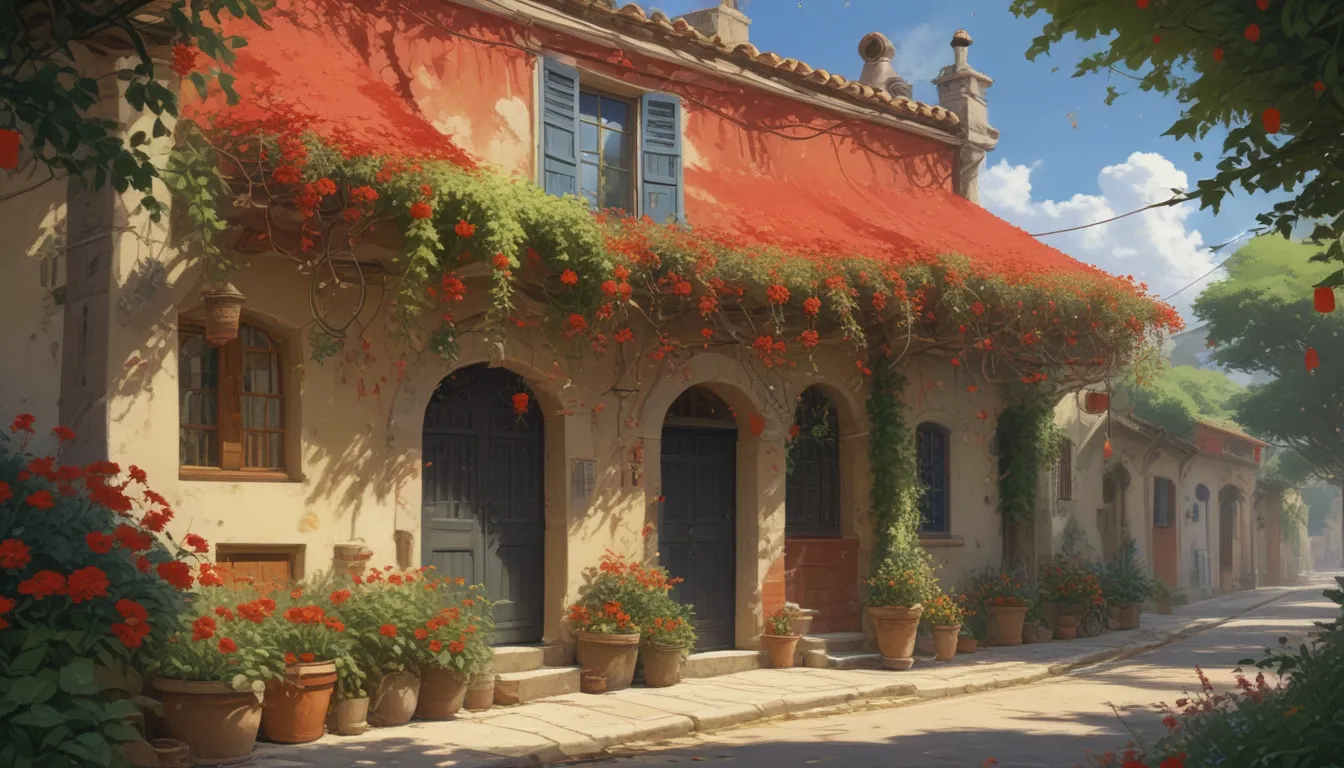The Comprehensive Guide to Growing and Caring for Spanish Flag (Firecracker Vine)

If you’re looking for a vibrant and fast-growing plant to adorn your garden, look no further than the Spanish flag, also known as the firecracker vine. This stunning plant can reach heights of up to 20 feet, with beautiful orange-red and cream flowers that will bring joy to your late summer and fall landscapes. Native to Mexico, the Spanish flag is a member of the morning glory family and is a favorite amongst gardeners for its striking appearance and unique characteristics.
Let’s dive into the world of the Spanish flag and explore all you need to know to grow and care for this dazzling vine.
What Is Spanish Flag Vine?
The Spanish flag vine, officially classified as Ipomoea lobata, is a fast-growing and colorful plant that is sure to make a statement in your garden. With its rapid growth rate of up to 10 feet per month, this vine is perfect for covering trellises, fences, and other structures in your garden. The Spanish flag produces vibrant orange-red and cream flowers that gradually fade to cream, creating a stunning visual display that will attract oohs and ahhs from late summer up to the first frost.
While the scientific name may be Ipomoea lobata, this plant is also known by other names such as Mina lobata and Quamoclit lobata. Its unique appearance has earned it colorful nicknames like exotic love vine. Despite being related to the morning glory family, the Spanish flag’s flowers are distinct and do not resemble the typical funnel-shaped blooms of other morning glory plants.
What You’ll Learn
- What Is Spanish Flag Vine?
- Plant Propagation
- How to Grow
- Pruning and Maintenance
- Growing Tips
- Where to Buy
- Managing Pests and Disease
- Best Uses
- Quick Reference Growing Guide
Plant Propagation
If you’re interested in growing Spanish flag in your garden, your best bet is to start with seeds. Due to its unique characteristics, Spanish flag starts may not be readily available at local nurseries. Starting seeds indoors can give you a head start on the growing season and ensure successful germination.
To start seeds indoors, sow them in a premoistened seed-starting mix about a quarter-inch deep at least six weeks before the last frost date in your area. The seeds have tough outer shells, so soaking them in water for 24 hours before sowing can help soften the shells and speed up germination. Once the seedlings emerge, transplant them outside after all danger of frost has passed.
Alternatively, you can sow seeds directly outdoors once the weather warms up. Make sure to space the seeds appropriately and provide the necessary support for the vines to climb as they grow.
How to Grow Firecracker Vines
When selecting a location to grow Spanish flag, make sure to choose a spot with plenty of sunlight and room for the vines to spread and climb. Spanish flag prefers full sun but can tolerate some shade, though it may not produce as many flowers in low-light conditions.
Ensure the soil is rich, moist, and well-drained to support the vigorous growth of the vine. Providing a trellis or support structure for the vines to climb is essential, as they can reach heights of up to 20 feet.
In terms of maintenance, Spanish flag is relatively low-maintenance once established. Regular watering during dry spells, along with occasional fertilization, will help the plants thrive and produce abundant flowers.
Growing Tips
- Plant in full sun.
- Provide a trellis or fence at least 10 feet tall.
- Fertilize with a high-phosphorous fertilizer when the plants form buds.
- To protect pollinators drawn to Spanish flag, avoid using insecticides or herbicides nearby.
Pruning and Maintenance
While Spanish flag vines do not require extensive pruning, you may need to train the runners to climb up the support structure. Regular fertilization and watering will help the plants stay healthy and vibrant throughout the growing season.
At the end of the season, remove plant debris to prevent pests from overwintering. Consider clipping the stems to prevent self-seeding if desired.
Where to Buy
Spanish flag seeds are available in 100-seed packets from various retailers. Check local nurseries or online sources for seeds or starts.
Managing Pests and Disease
Spanish flag is relatively resistant to pests and diseases, but some common issues include red spider mites, whiteflies, and fungal diseases. Treat any pest infestations promptly with appropriate remedies to protect your plants.
Best Uses for Spanish Flag Flowers
The vibrant colors and unique appearance of Spanish flag flowers make them a beautiful addition to any garden. They are ideal for adding height to borders, creating privacy screens, or growing in containers. By planting Spanish flag, you can attract beneficial pollinators such as bees, butterflies, and hummingbirds to your garden.
Quick Reference Growing Guide
- Plant Type: Herbaceous perennial vine mostly grown as an annual
- Flower/Foliage Color: Orange-red, magenta, yellow, cream/green, sometimes purple-tinged
- Native to: Mexico
- Water Needs: Moderate
- Hardiness (USDA Zones): 10-11
- Maintenance: Low
- Bloom Time: Late summer, fall
- Tolerance: Part shade
- Exposure: Full sun
- Soil Type: Nutrient-rich
- Time to Maturity: 60+ days
- Soil pH: 6.0-8.0
- Spacing: 18-24 inches
- Soil Drainage: Well-draining
- Planting Depth: 1/4 inch (seeds), even with soil surface (transplants)
- Attracts: Bees, butterflies, hummingbirds
- Height: 10-18 feet
- Uses: Back of border, container, privacy fence, trellis
- Spread: 1-2 feet
- Family: Convolvulaceae
- Growth Rate: Fast
- Genus: Ipomoea
- Common Pests and Disease: Red spider mites, whiteflies; fungal leaf spot, white blister
- Species: Lobata
A Fence of Many Colors
In conclusion, the Spanish flag vine is a delightful addition to any garden with its vibrant colors, rapid growth, and attractive flowers. Whether you’re looking to add height to your borders, create privacy screens, or brighten up your patio with containers, this plant is sure to impress.
If you’re considering growing Spanish flag in your garden, be prepared for a visual treat that will last from late summer through fall. With the right care and maintenance, you can enjoy the beauty of this unique plant and attract a variety of pollinators to your garden.
Are you ready to add a pop of color to your garden with the Spanish flag vine? Share your thoughts and experiences in the comments below, and let us know how this dazzling plant has transformed your outdoor space. Happy gardening!





